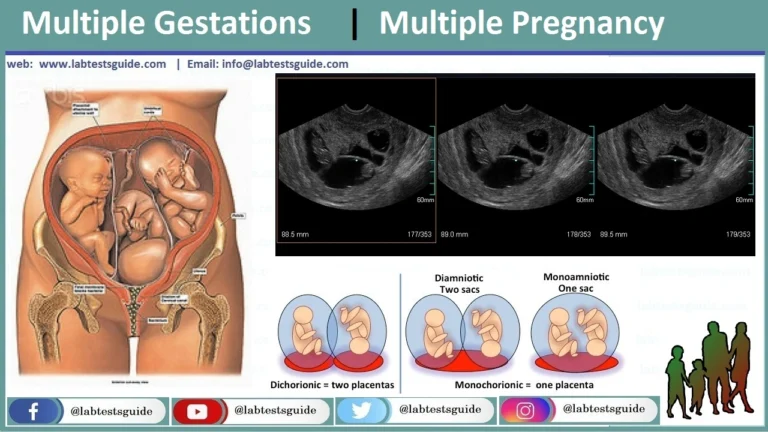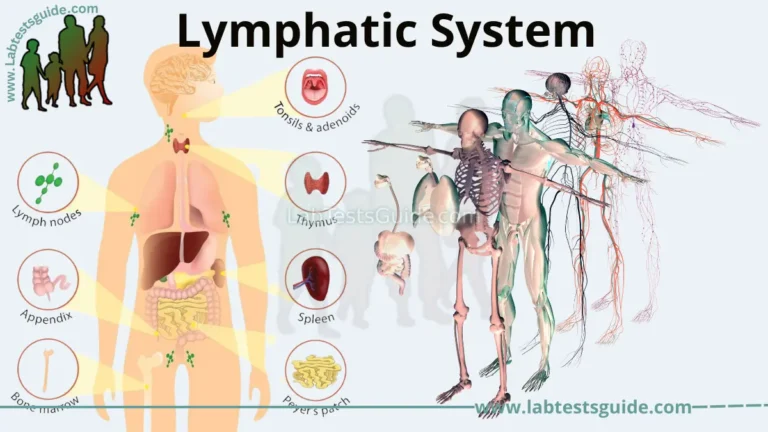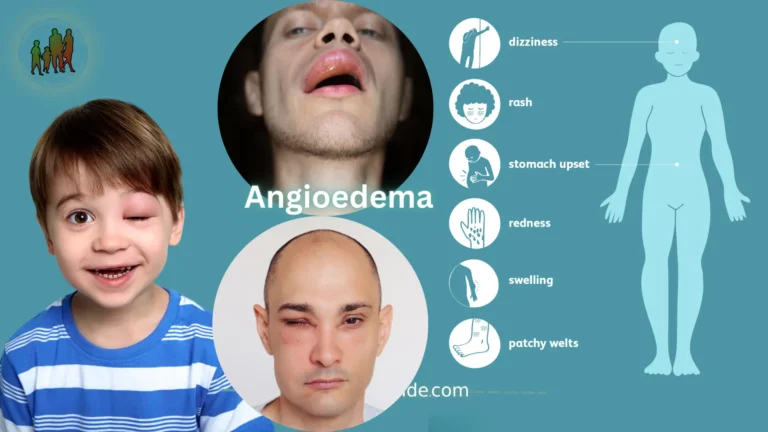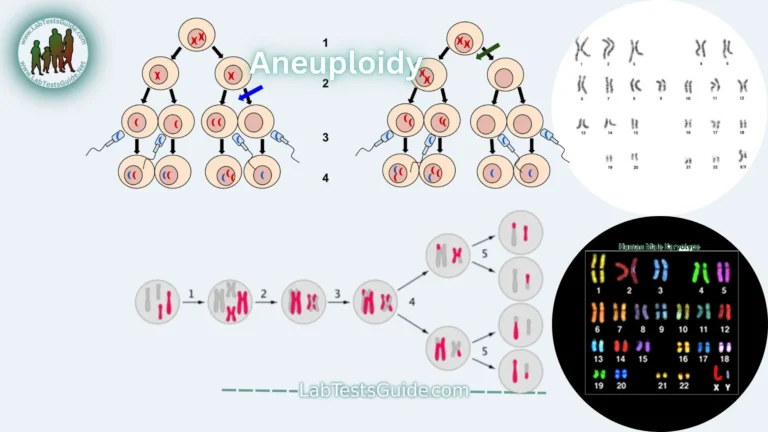Emphysema is a type of chronic obstructive pulmonary disease (COPD) that affects the lungs. It is a progressive and irreversible condition characterized by the damage and destruction of the alveoli, which are the tiny air sacs in the lungs responsible for exchanging oxygen and carbon dioxide during breathing.

What is Emphysema?
Emphysema is a chronic and progressive lung disease that falls under the category of chronic obstructive pulmonary disease (COPD). It primarily affects the alveoli, which are tiny air sacs in the lungs responsible for exchanging oxygen and carbon dioxide during breathing.
In a healthy lung, the alveoli are elastic, allowing them to expand during inhalation and contract during exhalation. However, in emphysema, long-term exposure to irritating particles, most commonly from cigarette smoke, triggers inflammation in the lungs. This inflammation leads to the destruction of the alveoli walls, causing them to lose their elasticity and resulting in larger air spaces.
Causes and Risk Factors:
Here are the causes and risk factors associated with emphysema.
- Smoking: Cigarette smoke contains harmful chemicals and toxins that can lead to inflammation and damage in the lungs over time. Smokers are at the highest risk of developing emphysema, and the more cigarettes a person smokes and the longer they have smoked, the greater their risk.
- Environmental Exposures: Long-term exposure to environmental pollutants and irritants can contribute to the development of emphysema. This includes exposure to air pollution, industrial chemicals, dust, and fumes in certain occupational settings.
- Alpha-1 Antitrypsin Deficiency: Alpha-1 antitrypsin (AAT) is a protein produced by the liver, and it plays a crucial role in protecting the lungs from the damaging effects of enzymes called proteases. In individuals with a genetic condition called alpha-1 antitrypsin deficiency, the body doesn’t produce enough AAT or produces a dysfunctional form of the protein. This deficiency can lead to emphysema even in individuals who have never smoked or had significant environmental exposures.
- Age: Emphysema is more commonly seen in older adults, as lung damage tends to accumulate over time.
- Gender: Historically, emphysema has been more common in men. However, as smoking rates have increased among women, the gender gap in emphysema incidence has narrowed.
- Occupational Hazards: Certain occupations that involve exposure to airborne irritants, dust, or chemicals may increase the risk of developing emphysema. Examples include coal mining, construction work, and exposure to industrial fumes.
- Genetics: In addition to alpha-1 antitrypsin deficiency, other genetic factors may play a role in a person’s susceptibility to developing emphysema, though these factors are not as well understood as smoking and AAT deficiency.
Signs and Symptoms:
Common signs and symptoms of emphysema include.
- Shortness of Breath: This is one of the most prominent and distressing symptoms of emphysema. Initially, shortness of breath may occur during physical exertion or strenuous activities. As the disease progresses, it may occur with minimal exertion or even at rest.
- Chronic Cough: People with emphysema often have a persistent cough. The cough may produce small amounts of clear or white mucus, and it can be worse in the morning or when lying down.
- Wheezing: Wheezing is a high-pitched whistling sound that occurs during breathing, particularly when exhaling. It is caused by the narrowed airways and difficulty in moving air through them.
- Chest Tightness or Discomfort: Some individuals with emphysema may experience a sensation of chest tightness or discomfort due to hyperinflation of the lungs and increased effort in breathing.
- Fatigue: The increased effort required to breathe and the reduced efficiency of oxygen exchange can lead to fatigue and a decreased ability to perform physical activities.
- Weight Loss: In more advanced stages of emphysema, individuals may experience unintentional weight loss, primarily due to the increased energy expenditure related to breathing difficulties.
- Barrel Chest: In severe cases, long-standing hyperinflation of the lungs can cause the chest to become rounded and barrel-shaped.
- Frequent Respiratory Infections: Emphysema weakens the lungs’ ability to clear mucus and foreign particles, making individuals more susceptible to respiratory infections, such as bronchitis and pneumonia.
- Decreased Exercise Tolerance: As the disease progresses, the ability to participate in physical activities decreases, leading to a reduced quality of life.
Prevention of Emphysema
- Quit Smoking: If you smoke, the single most important step you can take to prevent emphysema is to quit smoking. Seek support from healthcare professionals, quit-smoking programs, or support groups to increase your chances of success.
- Avoid Secondhand Smoke: Even if you don’t smoke, avoid exposure to secondhand smoke as it can still cause damage to your lungs.
- Minimize Occupational Exposure: If you work in an environment where you are exposed to dust, chemicals, or fumes, take appropriate precautions, such as wearing protective gear and following safety guidelines.
- Protective Masks: If you are exposed to environmental pollutants or airborne irritants regularly, wearing a mask may help reduce your exposure.
- Air Quality: Ensure good indoor air quality at home and workplace by proper ventilation and using air purifiers if necessary.
- Exercise Regularly: Engaging in regular physical activity can help improve lung function and overall health.
- Eat a Balanced Diet: A healthy diet rich in fruits, vegetables, whole grains, and lean proteins can support lung health and overall well-being.
- Maintain a Healthy Weight: Obesity can put extra strain on the lungs, so maintaining a healthy weight is beneficial.
- Stay Hydrated: Drink plenty of water to keep the airways moist and facilitate mucus clearance.
- Avoid Respiratory Infections: Take preventive measures, such as getting vaccinated against flu and pneumonia, to reduce the risk of respiratory infections.
- Regular Checkups: Periodic checkups with your healthcare provider can help monitor your lung health and detect any early signs of respiratory problems.
- Know Your Family History: If you have a family history of alpha-1 antitrypsin deficiency or other lung diseases, inform your healthcare provider, as it may influence your risk and prevention strategies.
Difference between Emphysema and Chronic Bronchitis:
| Feature | Emphysema | Chronic Bronchitis |
| Definition | Damage to alveoli (air sacs) leading to enlarged air spaces | Inflammation of bronchial tubes leading to increased mucus production and cough |
| Primary Site of Damage | Alveoli | Bronchial tubes |
| Symptoms | Progressive shortness of breath, chronic cough, wheezing | Chronic productive cough, shortness of breath, wheezing |
| Risk Factors | Smoking, environmental pollutants, alpha-1 antitrypsin deficiency | Smoking, air pollution, occupational irritants |
| Pathophysiology | Alveolar wall destruction and air trapping, decreased lung elasticity | Bronchial inflammation and airway obstruction, increased mucus production |
| Main Cause | Long-term exposure to irritants, primarily cigarette smoke | Long-term exposure to cigarette smoke |
| Gas Exchange | Impaired due to damaged alveoli | May be affected due to narrowed airways and mucus obstruction |
| Management | Similar treatments but may vary based on predominant symptoms | Similar treatments, focus on reducing inflammation and mucus production |
| Primary Symptom | Shortness of breath | Chronic productive cough |
| Chest X-ray Findings | Hyperinflation, flattened diaphragm | cEnlarged airways, increased lung markings |
| Common in COPD | One of the components of COPD | One of the components of COPD |
| Associated Conditions | cAlpha-1 antitrypsin deficiency | May be associated with other COPD-related conditions, such as asthma |
Anatomy and Physiology of the Lungs:
Here is an overview of the key aspects of the anatomy and physiology of the lungs.
Anatomy of the Lungs:
- Bronchi and Bronchioles: The trachea (windpipe) branches into two main bronchi, one for each lung. The bronchi further divide into smaller bronchioles, creating a branching network that distributes air throughout the lungs.
- Alveoli: At the end of the bronchioles are clusters of tiny air sacs called alveoli. These alveoli are the primary sites for gas exchange. There are millions of alveoli in the lungs, providing a vast surface area for gas exchange to occur.
- Pleura: The lungs are surrounded by a thin, double-layered membrane called the pleura. The visceral pleura covers the outer surface of the lungs, while the parietal pleura lines the inner surface of the chest cavity. The pleura helps to reduce friction during breathing.
Physiology of the Lungs:
- Inhalation (Inspiration): The process of breathing begins with inhalation. During this phase, the diaphragm (a dome-shaped muscle below the lungs) contracts and moves downward, while the intercostal muscles (located between the ribs) contract, pulling the ribcage upward and outward. These movements increase the volume of the chest cavity, causing a decrease in air pressure inside the lungs. As a result, air from the atmosphere rushes into the lungs through the airways and fills the alveoli.
- Gas Exchange: In the alveoli, oxygen from the inhaled air diffuses across the thin alveolar walls into the surrounding capillaries. Simultaneously, carbon dioxide, a waste product of cellular metabolism, diffuses from the capillaries into the alveoli. This exchange of gases occurs due to differences in their partial pressures between the air and the blood.
- Exhalation (Expiration): Exhalation is the process of breathing out. When the diaphragm and intercostal muscles relax, the chest cavity decreases in volume. This increases the air pressure inside the lungs, causing air to be pushed out of the alveoli and expelled from the body through the airways.
- Surfactant: The alveoli are lined with a surfactant, a substance that reduces the surface tension of the alveolar walls. Surfactant helps prevent the collapse of the alveoli during exhalation and ensures they remain open for efficient gas exchange.
- Respiratory Control: Breathing is regulated by the respiratory control center in the brainstem. It receives feedback from chemoreceptors that monitor the levels of oxygen, carbon dioxide, and pH in the blood. Based on this feedback, the respiratory control center adjusts the rate and depth of breathing to maintain proper gas exchange and acid-base balance in the body.
Pathophysiology of Emphysema:
- Chronic Inflammation: Long-term exposure to irritants like cigarette smoke leads to chronic inflammation in the airways and lung tissue. In response to irritants, immune cells release various inflammatory mediators, such as cytokines and proteases.
- Protease-Antiprotease Imbalance: One of the critical elements in the pathophysiology of emphysema is the protease-antiprotease imbalance. The lungs have a defense mechanism to protect the alveoli from damage. Proteases are enzymes that break down proteins, and they can be harmful when they are overactivated in the lung tissue. To counteract the damaging effects of proteases, the body produces antiproteases, including alpha-1 antitrypsin. Alpha-1 antitrypsin is essential for maintaining the structural integrity of the alveoli by neutralizing proteases.
- Decreased Antiprotease Activity: In some individuals, there may be a genetic deficiency of alpha-1 antitrypsin (alpha-1 antitrypsin deficiency), leading to a decreased ability to counteract the effects of proteases. This deficiency makes the lung tissue more vulnerable to protease-induced damage, especially in the presence of chronic inflammation.
- Alveolar Wall Destruction: The chronic inflammation and increased protease activity lead to damage and breakdown of the alveolar walls. This results in the enlargement of the airspaces and the formation of larger, less efficient air sacs in the lungs. As more alveoli are damaged and destroyed, the surface area available for gas exchange decreases, leading to impaired oxygen uptake and carbon dioxide removal.
- Loss of Lung Elasticity: The alveolar walls and lung tissue normally have elastic properties that allow the lungs to expand during inhalation and recoil during exhalation. In emphysema, the destruction of the alveolar walls reduces the lung’s elasticity. As a consequence, the lungs become less able to fully deflate during exhalation, leading to air trapping and hyperinflation.
- Air Trapping and Hyperinflation: As air becomes trapped in the enlarged airspaces, the lungs lose their ability to efficiently exhale, leading to hyperinflation. The hyperinflated lungs cause the diaphragm to flatten, and the chest appears to be expanded (barrel chest) due to the constant overinflation.
- Impaired Gas Exchange: The damaged alveoli and reduced surface area for gas exchange result in impaired oxygen uptake and carbon dioxide elimination during breathing. As a result, individuals with emphysema experience shortness of breath and decreased exercise tolerance.
Diagnosis and Staging:
Medical History and Physical Examination:
- The healthcare provider will start by taking a detailed medical history, including information about symptoms, smoking history, occupational exposures, and family history of lung diseases.
- A thorough physical examination will be performed, focusing on the respiratory system, to assess breathing patterns, lung sounds, and signs of respiratory distress.
Pulmonary Function Tests (PFTs):
- PFTs are the most crucial tests for diagnosing and evaluating the severity of emphysema.
- Spirometry is a common PFT that measures the amount of air you can inhale and exhale and the rate at which you can do so. It provides valuable information about lung function, including forced vital capacity (FVC) and forced expiratory volume in one second (FEV1).
- The FEV1/FVC ratio is particularly essential in distinguishing obstructive lung diseases like emphysema from restrictive lung diseases.
Imaging Studies:
Chest X-ray: A chest X-ray may be performed to assess the size and shape of the lungs and look for any signs of hyperinflation or other lung abnormalities.
Computed Tomography (CT) Scan: CT scan of the chest provides more detailed images and can detect early signs of emphysema, including enlarged air spaces and changes in lung density.
Arterial Blood Gas (ABG) Analysis:
ABG analysis involves taking a blood sample from an artery to assess oxygen and carbon dioxide levels in the blood. It helps evaluate the efficiency of gas exchange in the lungs and determine the severity of respiratory impairment.
Other Tests:
- Alpha-1 antitrypsin deficiency test: If emphysema is diagnosed, especially in younger individuals or those with a family history of emphysema, a blood test to check for alpha-1 antitrypsin deficiency may be recommended.
- Staging of Emphysema: Emphysema is typically staged based on the results of pulmonary function tests, particularly the FEV1% predicted. The Global Initiative for Chronic Obstructive
Lung Disease (GOLD) and the American Thoracic Society (ATS) use the following staging system:
- Stage 1 (Mild): FEV1 ≥ 80% predicted
- Stage 2 (Moderate): FEV1 50-79% predicted
- Stage 3 (Severe): FEV1 30-49% predicted
- Stage 4 (Very Severe): FEV1 < 30% predicted
Treatment and Management:
Lifestyle Changes:
- Smoking Cessation: The most crucial step in managing emphysema is to quit smoking. This can significantly slow down the progression of the disease and improve lung function.
- Avoiding Irritants: Minimize exposure to air pollutants, dust, fumes, and other irritants that can exacerbate symptoms.
Medications:
- Bronchodilators: Short-acting and long-acting bronchodilators are commonly prescribed to relax the airway muscles and help open the airways, making breathing easier.
- Corticosteroids: Inhaled or oral corticosteroids may be used to reduce inflammation in the airways, especially during exacerbations or when symptoms are more severe.
Pulmonary Rehabilitation:
- Pulmonary rehabilitation is a comprehensive program that includes exercise training, education about the disease, breathing techniques, and support to improve lung function, increase exercise tolerance, and enhance overall quality of life.
Oxygen Therapy:
- For individuals with advanced emphysema and low blood oxygen levels, supplemental oxygen therapy may be prescribed. This helps ensure sufficient oxygen supply to the body and reduce the workload on the heart and lungs.
Surgical Interventions:
- Lung Volume Reduction Surgery (LVRS): In this procedure, damaged portions of the lungs are removed to reduce hyperinflation and improve lung function.
- Lung Transplantation: For individuals with severe emphysema and significant lung damage, lung transplantation may be considered as a treatment option.
Vaccinations:
- Annual influenza (flu) vaccination and pneumococcal vaccination are recommended to prevent respiratory infections, which can exacerbate emphysema symptoms.
Breathing Techniques:
- Learning proper breathing techniques can help individuals with emphysema manage breathlessness and improve breathing efficiency.
Management of Exacerbations:
- Exacerbations are periods when emphysema symptoms worsen. Prompt management with medications, oxygen therapy, and, in some cases, antibiotics, is essential to prevent further lung damage.
Psychological Support:
- Living with a chronic lung condition like emphysema can be challenging. Psychological support and counseling can help individuals cope with anxiety, depression, and stress related to their condition.
Regular Follow-up:
- Regular check-ups with a healthcare provider are essential for monitoring lung function, adjusting treatment plans, and making necessary changes to manage the disease effectively.
Living with Emphysema:
Here are some tips and strategies for living with emphysema.
- Follow the Treatment Plan: Work closely with your healthcare team to follow the prescribed treatment plan, including medications, pulmonary rehabilitation, and oxygen therapy if needed. Consistency and adherence to the treatment plan are essential for managing symptoms and preventing exacerbations.
- Quit Smoking: If you are a smoker, quitting smoking is the most critical step you can take to slow down the progression of emphysema and improve your lung health.
- Manage Breathlessness: Learn and practice breathing techniques, such as pursed-lip breathing, to manage breathlessness. Paced breathing during physical activities can also help conserve energy and reduce shortness of breath.
- Stay Active: Engage in regular physical activity to improve lung function, endurance, and overall well-being. Consult with your healthcare provider before starting any exercise program to ensure it is safe and appropriate for your condition.
- Pace Yourself: Plan your daily activities to avoid overexertion. Take breaks when needed and distribute tasks throughout the day to conserve energy.
- Avoid Triggers: Identify and avoid environmental triggers that may exacerbate your symptoms, such as air pollution, allergens, and respiratory irritants.
- Eat a Healthy Diet: Follow a balanced diet rich in fruits, vegetables, whole grains, and lean proteins to support your overall health and immune system.
- Stay Hydrated: Drink plenty of water to keep the airways moist and facilitate mucus clearance.
- Manage Stress: Emphysema can be emotionally challenging. Practice stress-reducing techniques, such as meditation, yoga, or spending time in nature, to improve mental well-being.
- Get Vaccinated: Ensure you receive the annual flu vaccination and pneumococcal vaccination as recommended by your healthcare provider to protect against respiratory infections.
- Stay Connected: Seek support from family, friends, or support groups to share experiences, receive encouragement, and stay socially connected.
- Monitor Symptoms: Keep track of your symptoms and any changes in your condition. Report any significant changes to your healthcare provider promptly.
- Travel Considerations: If you plan to travel, make necessary arrangements in advance for medications, oxygen, and other medical needs.
- Be Proactive: Stay informed about your condition and be proactive in managing your health. Ask questions, seek guidance from healthcare professionals, and be an active participant in your treatment plan.
Complications and Prognosis:
- Respiratory Infections: People with emphysema are more susceptible to respiratory infections, such as pneumonia and bronchitis. These infections can exacerbate emphysema symptoms and further damage the already compromised lung tissue.
- Pulmonary Hypertension: Emphysema can cause pulmonary hypertension, a condition where the blood pressure in the arteries of the lungs becomes elevated. This puts additional strain on the right side of the heart and can lead to heart problems.
- Cor Pulmonale: Over time, chronic pulmonary hypertension can cause the right side of the heart to become enlarged and weakened, a condition known as cor pulmonale. It can lead to heart failure.
- Lung Function Decline: Emphysema is a progressive disease, and if not effectively managed, lung function can continue to decline, leading to worsening symptoms and reduced quality of life.
- Acute Exacerbations: Emphysema can have periods of acute exacerbations, during which symptoms worsen suddenly. These exacerbations may require hospitalization and can be life-threatening.
- Depression and Anxiety: The challenges of living with a chronic lung condition like emphysema can lead to psychological issues such as depression and anxiety.
Prognosis of Emphysema:
- The prognosis of emphysema can vary depending on several factors, including the stage of the disease at the time of diagnosis, the individual’s response to treatment, and lifestyle choices. Emphysema is a progressive condition, and lung damage is generally irreversible. However, early diagnosis and appropriate management can significantly improve the outlook and quality of life for individuals with emphysema.
Factors influencing prognosis include:
- Smoking Status: Continuing to smoke can worsen the progression of emphysema and reduce the effectiveness of treatment. Quitting smoking is crucial to improve the prognosis.
- Stage of Disease at Diagnosis: Early diagnosis and intervention offer a better chance of slowing down the progression of emphysema and preserving lung function.
- Response to Treatment: Adherence to the prescribed treatment plan, including medications, pulmonary rehabilitation, and lifestyle changes, can positively impact the prognosis.
- Overall Health: The presence of other medical conditions and overall health status can influence the course of emphysema.
- Genetic Factors: In cases of alpha-1 antitrypsin deficiency, the genetic component may influence the severity and progression of emphysema.
FAQs:
What is emphysema?
Emphysema is a chronic lung condition characterized by the damage and destruction of the air sacs (alveoli) in the lungs, leading to reduced lung function and difficulties in breathing.
What causes emphysema?
The primary cause of emphysema is long-term exposure to irritants, especially cigarette smoke. Other risk factors include environmental pollutants, occupational exposures, and genetic factors like alpha-1 antitrypsin deficiency.
What are the symptoms of emphysema?
Common symptoms of emphysema include shortness of breath, chronic cough, wheezing, chest tightness, and fatigue.
How is emphysema diagnosed?
Emphysema is diagnosed through a combination of medical history, physical examination, pulmonary function tests (spirometry), imaging studies (chest X-ray, CT scan), and arterial blood gas analysis.
Can emphysema be cured?
Emphysema is a chronic condition, and the lung damage is generally irreversible. However, with proper management, symptoms can be relieved, and the progression of the disease can be slowed down.
What is the treatment for emphysema?
Treatment for emphysema includes lifestyle changes (e.g., smoking cessation), medications (bronchodilators, corticosteroids), pulmonary rehabilitation, oxygen therapy, and, in severe cases, surgical interventions.
Can emphysema be prevented?
While some risk factors for emphysema are beyond control, such as genetic predisposition, quitting smoking and avoiding environmental irritants can significantly reduce the risk.
Can emphysema lead to other complications?
Yes, emphysema can lead to complications such as respiratory infections, pulmonary hypertension, cor pulmonale, and exacerbations that require hospitalization.
How can I improve my quality of life with emphysema?
Adhering to the prescribed treatment plan, staying physically active, avoiding irritants, maintaining a healthy diet, and seeking psychological support can help improve the quality of life for individuals living with emphysema.
Is it safe to exercise with emphysema?
Yes, exercise is generally safe and beneficial for people with emphysema. However, it is essential to consult with your healthcare provider before starting any exercise program to ensure it is suitable for your condition.
Conclusion:
In conclusion, emphysema is a chronic lung condition characterized by the destruction of the alveoli in the lungs, leading to impaired gas exchange and breathing difficulties. Long-term exposure to irritants, particularly cigarette smoke, is the primary cause of emphysema. Early diagnosis, smoking cessation, adherence to treatment plans, and lifestyle modifications are crucial for managing symptoms, slowing down disease progression, and improving the quality of life for individuals living with emphysema. While the lung damage is generally irreversible, proper management can significantly alleviate symptoms and enhance overall well-being for those affected by this chronic respiratory condition.
Home | Blog | About Us | Contact Us | Disclaimer
Possible References Used






